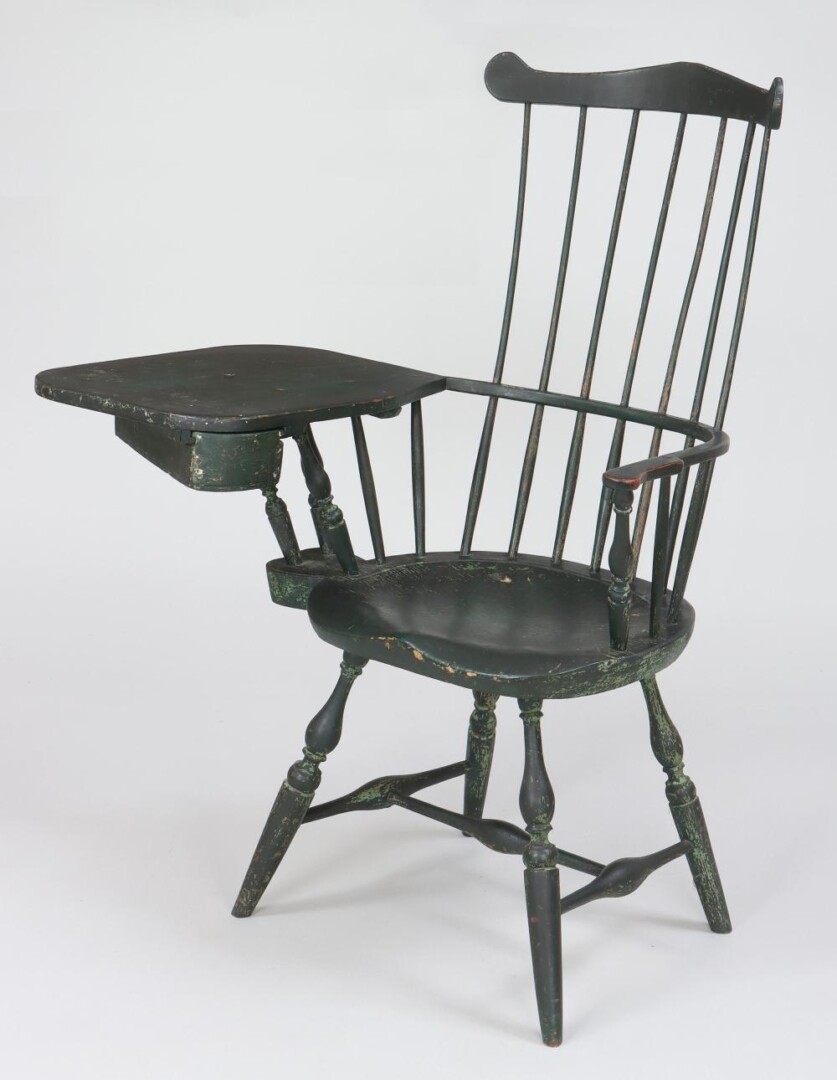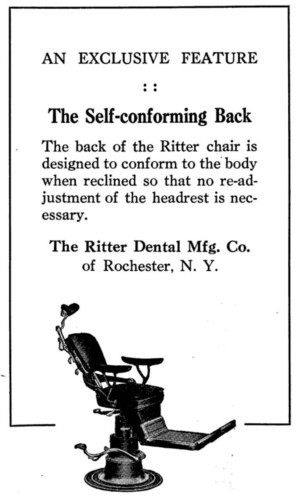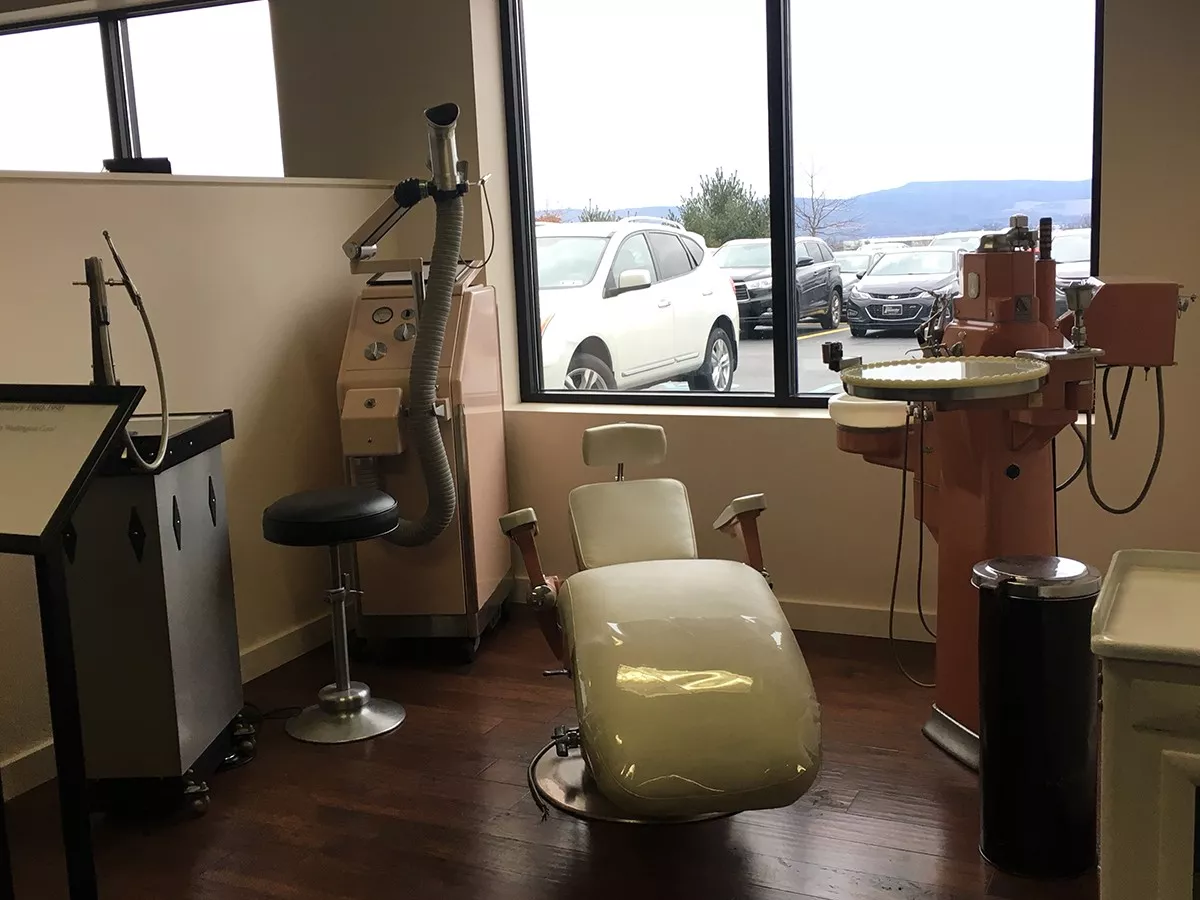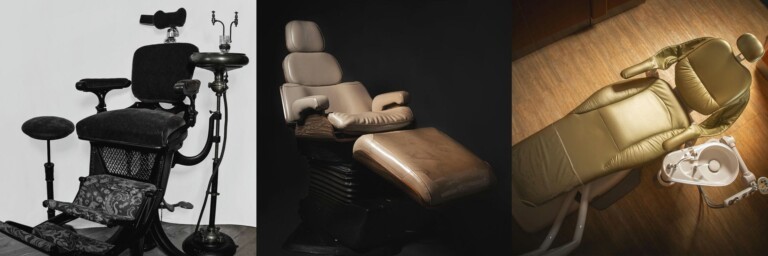Track the evolution of the dental chair from 1790 through today.
From its humble beginnings in 1790 and the fancy parlor dental chair of the early 1900s, to the streamlined workhorse of the 1930s and the colorful marvels of the Mid-Century Modern era, the dental chair has continually evolved to serve its purpose. The intended function of a dental chair has always been effectively positioning a patient to give the dentist better access to the patient’s mouth. However, the design of early dental chairs scarcely resembled today’s familiar reclining chairs.
Here’s a brief look at how the dental chair has advanced and improved through the centuries to the gold standard of today.

1790: Who invented the dental chair?
An American dentist named Dr. Josiah Flagg Jr. invented the first dental chair in 1790. He modified a Windsor writing chair for use in his practice. This was a plain wooden chair with an attached armrest/small table on it for ease of writing.
Dr. Flagg, practicing dentistry in Boston at the time, outfitted the chair with a padded headrest and used the attached table for equipment. It looked similar to this chair, shown. You can learn more about the “oldest known dental chair in the United States” at Temple University’s Kornberg School of Dentistry’s Historical Dental Museum Collection.
1832: Moving forward by going backward.
Thank Dr. James Snell for shifting progress forward — or in this case, backward. The first reclining chair was created by James Snell of London in 1832. By the late 19th century, there were at least 80 different chair designs on the market. At their home office in Northeast Pennsylvania, Benco Dental showcases several makes and models of vintage dental chairs in their museum. The brainchild of the company’s Chief Customer Advocate, Larry Cohen and his wife, Sally, the museum features dental artifacts collected by Cohen that span the late 1800s to the early 1960s.

A luxury dental chair from the 1870s.
1870: Dr. Lucy Hobbs Taylor spared no expense.
How did the dental chair evolve from this plush-for-its-era model in the 1870s, shown right, which was an improvement on Dr. Flagg’s chair, to the state-of-the-art models that dentists purchase for their practices today?
This 1870s red upholstered wooden chair (right) from the Benco Dental museum is a stand-in for Dr. Lucy Hobbs Taylor‘s treasured dental chair. The chair was an expensive piece of equipment in her day, and she was duly proud of hers. The first woman in the U.S. to earn a dental degree even mentioned it in her memoirs, including its $100 cost, which in the early 1870s was quite a sum.
A dental chair from SS White’s 1867 catalog, cost a whopping $85 in its standard model. If a dentist wanted silver-headed nails on the dental chair’s upholstery, that was an upcharge. This SS White “Dental Chair No. 1” shown below (left) looks strikingly similar to the red upholstered wooden chair in the Benco Dental museum. One difference: “Dental Chair No. 1” features a mechanism to raise and lower the headrest. Benco’s museum model ratchets up and down manually.
Also, SS White carried more elaborate models, such as the “J.O. Whitcomb’s Dental Operating Chair. No.4”, shown (center), with a price of $230 in its basic format.
This beauty from the early 1900s, shown below (right), also showcased in the Benco Dental museum, features more adornment than those found in a dental office today. It begins to resemble what is recognized as a dental chair today. This model, shown, was top-of-the-line for its time, and represented a posh in the evolution of the dental chair.

Ready for an up-close-and-personal tour of the dental chair evolution? Visit the Benco Dental museum at the company’s home office in northeastern Pennsylvania today.
1900: From fancy parlor chair to streamlined workhorse.
Dental suppliers of the late 19th and early 20th century made sure that dentists who did business with them realized their products were in line with that era’s most current technology. This page from an SS White catalog, shown, illustrates that with phrases such as “first hydraulic” and “first metal-frame.”
Until the 20th century, dental chairs primarily consisted of rigid, uncomfortable designs with limited adjustability. The early 1900s marked a pivotal shift with the introduction of hydraulic systems, allowing dentists to adjust chair height and positioning. Innovations during this period also focused on incorporating padded upholstery and ergonomic contours to improve patient comfort during lengthy procedures, reflecting a growing awareness of patient well-being in dental settings. These modifications, while rudimentary, laid the groundwork for subsequent developments that prioritized patient comfort and ergonomic functionality.

Illustration from late 19th century SS White catalog.
1920: The dental chair technology takeover begins.
By the 1920s, the dental chair became more streamlined. Gone were the fancy features, like fringed upholstery and gilded ironwork. Instead, the latest technology and easy-to-clean advantage of leather was more prized.
As the profession progressed into the 1930s, technological strides propelled the refinement of dental chairs. Engineers and designers began implementing motorized controls for chair movement and positioning, granting dentists greater precision and control during treatments.
Simultaneously, upholstery materials evolved to offer enhanced durability and improved sanitation, addressing concerns about cleanliness in dental environments. The integration of reclining features and adjustable headrests further emphasized patient comfort, aligning with a burgeoning emphasis on holistic patient care within dentistry.
Advancements in this era represented a transitional phase in the evolution of dental chairs, marking the pivot from simple adjustable chairs to more sophisticated, patient-centric designs that emphasized both functionality and comfort.
1960: Mid-Century Modern marvels.

By the 1960s, the dental chair had become a streamlined marvel that Dr. Hobbs could only have imagined.
Fashion prevailed, as the chairs became available in some of the more popular hues of the Mid-Century Modern era, like “Biscayne Blue” or “Washington Coral.” Dental chairs were as colorful as the cars! What was once a purely functional device began to develop personality and style.
Advancements in materials science spurred significant improvements in chair construction, with the integration of lightweight yet durable alloys enhancing the structural integrity of dental chairs. This era witnessed a departure from the traditional rigid designs, as engineers and designers embraced ergonomic principles, introducing adjustable armrests, reclining features, and contoured seating to accommodate a diverse range of patient body types. Moreover, the incorporation of pneumatic systems allowed for smoother, more precise chair adjustments, enabling dentists to maneuver effortlessly during intricate procedures, thereby enhancing treatment efficacy.
We’ve come a long way from the hard-backed writing chair with a crude headrest, which is good news for the ergonomic comfort of both patients and dentists. This seemingly simple, functional tool took centuries of ingenuity to get where we are today. While we don’t yet know what it will look like, we can count on continuing advances as we move forward, looking for the optimal combination of access and comfort.
Whether researching new dental chairs, reupholstering tried-and-true favorites, or hoping for a glimpse of dental history, dental professionals can find it all by scheduling a visit to one of three Benco Dental CenterPoint showrooms.
For details, contact Benco or call 1.800.GO.BENCO.

Weber dental chair unit, and SS White air abrasion unit in Washington Coral, courtesy of Benco Dental.


